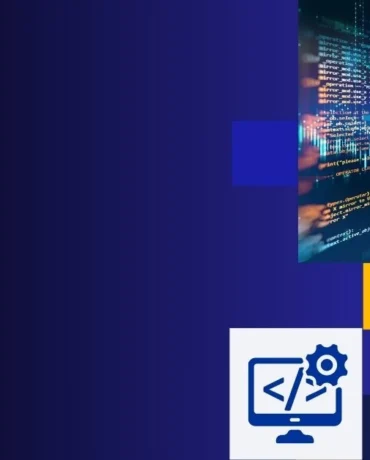A rapid digital revolution is occurring in the field of education. Custom software appears as a crucial catalyst allowing educational institutions to refine their workflows and improve learning experiences for students. Consequently, classrooms are no longer limited to a 4-wall space but are now extending into virtual environments.
This article will study the struggles of educational institutions regarding normal one-size-fits-all software and how custom-developed solutions enable a more effective learning environment.
Understanding software needs of educational institutions
Off-the-shelf software solutions exist, however, by being pre-made, they often fall short of addressing the needs of institutions
- Data security: Educational software needs robust security and data privacy compliance, however, they are not sure if the general software truly commits to it.
- Database integration: Integrating commercial software with existing systems to unify the database can be complex and expensive.
- Customized features: Each school has its own administration process or reporting preferences, therefore, using common solutions is not practical for them.
- Compatibility with diverse users: Off-the-shelf software does not have enough resources to adapt to multiple ages, learning styles, and comprehension skills of learners.
- Educational resources: Personalized learning pathways, interactive material, and evaluation tools are frequently absent in the common software.
The power of customized student management systems
To overcome the limitations of off-the-shelf software, educational institutions can adopt tailor-made solutions such as customized student management systems (SMS) to optimize administrative operations and data management.
This is when customized student management systems (SMS) emerge as an attractive solution with what it can bring:
- Automatic tasks: free up administrators’ and teachers’ valuable time by automating routine communication, attendance monitoring, and registration.
- Unifying database: eliminates silos and ensures consistent information across systems for an effective decision-making process.
- Data analytics and reports: offer insightful information on student performance and inventory, facilitating better resource distribution.
- Smooth communication: streamline information exchange obstacles among parents, teachers, and students through mobile apps and in-time alerts.
- Enhanced assessment: empower educators with automated grading and tailored feedback mechanisms for a more competent evaluation.
Revolutionizing learning with custom management systems
Personalized learning experiences are also necessary in the digital era to meet the needs of diverse learners while tackling attention span decline.
At the front of this transformation are Custom learning management systems (LMS), which enable organizations to manage and tailor e-learning content to each learner’s preferences. Many experts believe that the LMS market will expand at a CAGR of 19.2% during 2023-2030, reaching USD 69.69 Billion.
Customized LMS caters to individual needs with features like adaptive learning technologies and interactive environments with various approaches such as videos, interactive exercises, and gamified components. Regarding assessment options, the system goes beyond standard exams, providing also projects, portfolios, and peer-review processes.
Together with SMS, it equips teachers with a greater understanding of students’ development to give them specific guidance. Thanks to it, students can start on customized learning pathways matching their strengths and weaknesses so they can advance at their own pace.
Integrating advanced technologies in education
Since the field of education is always changing, integrating cutting-edge technologies like AI and big data has the potential to completely transform the educational process.
The role of AI in custom educational software:
- Analyzing learners’ data and recommending personalized learning paths, boosting understanding and engagement.
- Offering suitable feedback, answering questions, guiding students as a virtual tutor, and grading multiple-choice or short-answer questions to free up educators for higher-level tasks and personalized feedback.
Big data has great potential:
- Detecting students’ difficulties for educators to adjust curriculum design and teaching methods on time.
- Suggesting resources, pathways, or courses tailored to an individual’s needs.
Advanced tech use must be responsible and ethical, especially when it comes to student privacy. Technology should complement, not replace, educators.
Conclusion
Custom software is essential to leverage traditional education by supporting organizations to overcome challenges and improve their programs for a huge number of students.
Educational institutions can now create a dynamic and engaging learning environment that prepares students with the necessary skills for a constantly changing future
Fully understanding the market, Sunbytes is proud to be your reliable partner in tailoring technology to your specific educational needs, while keeping up with the latest trends or changes in laws.
Outsource your IT needs to us and gain access to flexible, cost-effective solutions that propel your institution toward a tech-powered future of learning. Contact us today to shape the future of education.
Let’s get started with Sunbytes
Let us know your requirements for the team and we will get back to you right away.


